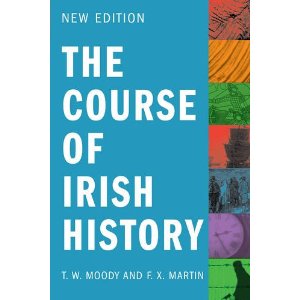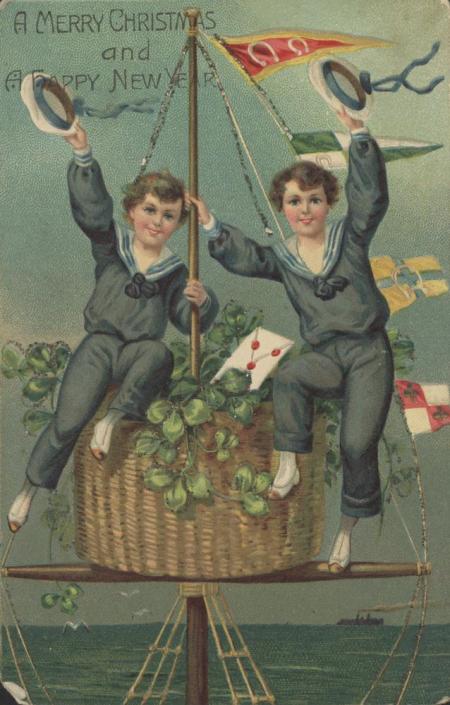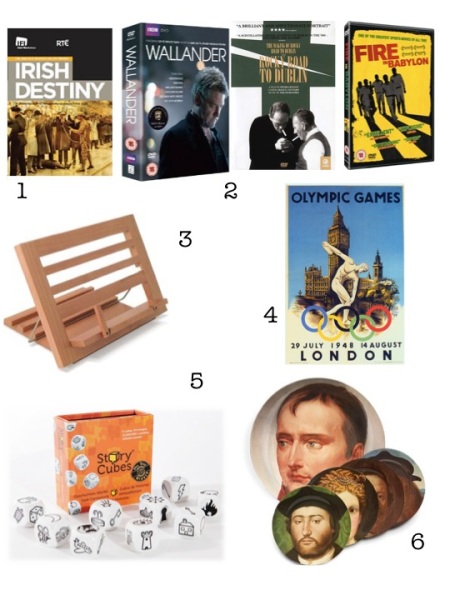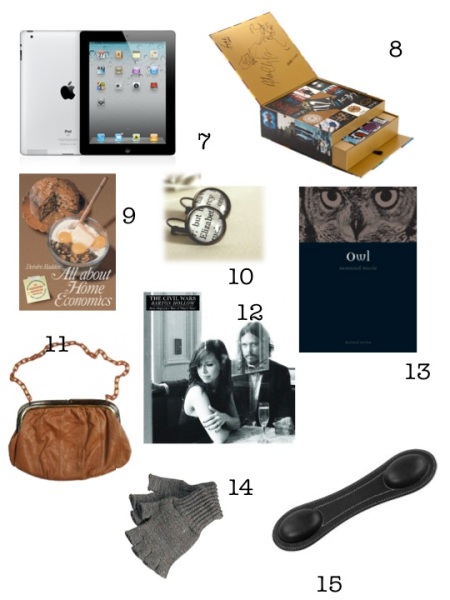 Died January 2012. A dedicated follower of Irish history and culture, and voluminous writer on many useful and arcane subjects, Pue died at his country estate ‘WordPress’ in the early hours of the morning. The cause of his death was unclear, but friends and relatives had recently begun to notice that Pue had been gripped by a general fatigue and malaise. They had a tendency to suggest that this too would pass, but Pue himself was less certain. To his closest friends he confided a deepening sense of doubt in his daily purpose. Such doubts had previously spurred active phases of writing and philosophizing but now Pue was often to be heard muttering darkly of evaluation reports, peer review and the employment market. Even as his health declined he continued to compile statistical tables of outputs which he believed could prove that his country had fallen victim to a false economy of knowledge. It seemed that his worldly cares could not be ameliorated through creativity and that his writing, too, had become one of his daily burdens. He feared disappointing his avid readers but alas he could go on no longer. Pue’s many friends and acquaintances may be cheered by the fact of his conversion to the idea of reincarnation during his dying days when he was often heard to murmur ‘Perhaps I shall return as a curlew’ and a smile would pass his lips.
Died January 2012. A dedicated follower of Irish history and culture, and voluminous writer on many useful and arcane subjects, Pue died at his country estate ‘WordPress’ in the early hours of the morning. The cause of his death was unclear, but friends and relatives had recently begun to notice that Pue had been gripped by a general fatigue and malaise. They had a tendency to suggest that this too would pass, but Pue himself was less certain. To his closest friends he confided a deepening sense of doubt in his daily purpose. Such doubts had previously spurred active phases of writing and philosophizing but now Pue was often to be heard muttering darkly of evaluation reports, peer review and the employment market. Even as his health declined he continued to compile statistical tables of outputs which he believed could prove that his country had fallen victim to a false economy of knowledge. It seemed that his worldly cares could not be ameliorated through creativity and that his writing, too, had become one of his daily burdens. He feared disappointing his avid readers but alas he could go on no longer. Pue’s many friends and acquaintances may be cheered by the fact of his conversion to the idea of reincarnation during his dying days when he was often heard to murmur ‘Perhaps I shall return as a curlew’ and a smile would pass his lips.Obituary: Pue S. Occurrences, 2009-2012
9 January 2012 Died January 2012. A dedicated follower of Irish history and culture, and voluminous writer on many useful and arcane subjects, Pue died at his country estate ‘WordPress’ in the early hours of the morning. The cause of his death was unclear, but friends and relatives had recently begun to notice that Pue had been gripped by a general fatigue and malaise. They had a tendency to suggest that this too would pass, but Pue himself was less certain. To his closest friends he confided a deepening sense of doubt in his daily purpose. Such doubts had previously spurred active phases of writing and philosophizing but now Pue was often to be heard muttering darkly of evaluation reports, peer review and the employment market. Even as his health declined he continued to compile statistical tables of outputs which he believed could prove that his country had fallen victim to a false economy of knowledge. It seemed that his worldly cares could not be ameliorated through creativity and that his writing, too, had become one of his daily burdens. He feared disappointing his avid readers but alas he could go on no longer. Pue’s many friends and acquaintances may be cheered by the fact of his conversion to the idea of reincarnation during his dying days when he was often heard to murmur ‘Perhaps I shall return as a curlew’ and a smile would pass his lips.
Died January 2012. A dedicated follower of Irish history and culture, and voluminous writer on many useful and arcane subjects, Pue died at his country estate ‘WordPress’ in the early hours of the morning. The cause of his death was unclear, but friends and relatives had recently begun to notice that Pue had been gripped by a general fatigue and malaise. They had a tendency to suggest that this too would pass, but Pue himself was less certain. To his closest friends he confided a deepening sense of doubt in his daily purpose. Such doubts had previously spurred active phases of writing and philosophizing but now Pue was often to be heard muttering darkly of evaluation reports, peer review and the employment market. Even as his health declined he continued to compile statistical tables of outputs which he believed could prove that his country had fallen victim to a false economy of knowledge. It seemed that his worldly cares could not be ameliorated through creativity and that his writing, too, had become one of his daily burdens. He feared disappointing his avid readers but alas he could go on no longer. Pue’s many friends and acquaintances may be cheered by the fact of his conversion to the idea of reincarnation during his dying days when he was often heard to murmur ‘Perhaps I shall return as a curlew’ and a smile would pass his lips.Happy Christmas from all at Pue’s
19 December 2011Winner of competition to win a copy of T.W. Moody and F.X. Martin (ed), The Course of Irish History, 2011
16 December 2011 On Monday we ran a competition to give a way a Mericer Press book. We had a fantastic response and. I am pleased to announces that the winner chosen out of the hat was Michael Seery who submitted his entry by twitter. If Michael can email us at Pue’s we will arrange to have his book sent to him. Congratulations Michael! Many thanks to everyone who entered and to Mercier who supplied the book.
On Monday we ran a competition to give a way a Mericer Press book. We had a fantastic response and. I am pleased to announces that the winner chosen out of the hat was Michael Seery who submitted his entry by twitter. If Michael can email us at Pue’s we will arrange to have his book sent to him. Congratulations Michael! Many thanks to everyone who entered and to Mercier who supplied the book.
Re-evaluating Memory
14 December 2011Two weeks ago I happened to catch a fascinating documentary on BBC4 about Abraham Lincoln. The show was called ‘Abraham Lincoln: Saint or Sinner’, and it set out to interrogate the politics of memory in relation to one of the most popular, if mythologized, figures in American history. Having grown up with a clearly romanticized image of ‘Honest Abe’ as a national hero who freed the slaves and is accordingly memorialized in countless ways today, not least in the Lincoln Memorial in Washington, DC, and on the face of the five dollar bill, I appreciated the clear-headed objectivity of the historiographical process evident in the documentary. I certainly came away from the hour-long programme with a fuller, more complete and more objective sense of Lincoln as a politician, one that will encourage me, in future, to view Lincoln’s legacy a little more critically than I have hitherto done.
The programme got me thinking about the ways in which cultural memory can lionize certain individuals, to the point where the reality of their lives is buried beneath a kind of mythology produced by the cultural and social mores of a succeeding period. A literary case in point is Charlotte Brontë, whose life and legacy were constructed according to very particular Victorian-era strictures on female behaviour by her first biographer, Elizabeth Gaskell. The resulting image of Brontë held wide sway throughout the Victorian period and into the twentieth century, with readers regularly making pilgrimages to Brontë country to pay homage to an author about whom they had only vaguely realistic ideas and perceptions. The same might be said about many of our so-called ‘canonical’ writers, as well as famed historical figures. While we might argue that the contemporary context of such figures is central to an understanding of their actions, it seems equally essential that we acknowledge the context in which scholarship and historiography are produced. This would help explain why certain individuals and texts receive an inordinate amount of critical attention, while others remain marginalized. Much Irish Gothic fiction of the late eighteenth and early nineteenth centuries, for instance, has suffered at the hands of the canonization of English writers like Horace Walpole, Ann Radcliffe and Matthew Lewis, to the point where it often seems as if Irish writers simply didn’t engage with the Gothic aesthetic at all in this period. That this is patently untrue is clear from the litany of Gothic novels produced by Irish pens in the latter half of the eighteenth century alone: The Adventures of Miss Sophia Berkley (1760), Longsword (1762), The History of Lady Barton (1771), Earl Strongbow (1789), The Children of the Abbey (1796), and Clermont (1798), to name but a few. Read more
Pue’s Christmas book competition
12 December 2011Just in case you’re not getting enough books for Christmas this year we thought we would sort out one more for you! This year Mercier Press reprinted The Course of Irish History, ed. T.W. Moody and F.X. Martin (1967; Cork: Mercier Press, 2011) with an added chapter by Dermot Keogh. Thanks to the kind people at Mercier Press we have a copy to give away to one lucky reader. There are three ways that you can enter our competition. Share this link on you facebook page, re-tweet this blog tweet or email us with your name and address (puesoccurrences [AT] gmail.com). The competition closes on Thursday at 5.00 pm and we will announce the winner on Friday with a post.
The world’s oldest camera
9 December 2011By Lisa Griffith
 In the last few years I have had a growing interest in photography and working in the national Print Museum has made me think a bit more about the machines that create the historical documents we most use. I used to tell my students at Carlow College that historians are quite unimaginative with their sources- the majority of what we use is the printed or written word, with a smattering of images, and how much can this really tell us about life in the period we are living. I know this can’t be universally applied but often I think as historians we can be quite boring in our sources particularly when we are in a class room. We bombard students with words and often in between they get a few nice pictures or even a political cartoon.
In the last few years I have had a growing interest in photography and working in the national Print Museum has made me think a bit more about the machines that create the historical documents we most use. I used to tell my students at Carlow College that historians are quite unimaginative with their sources- the majority of what we use is the printed or written word, with a smattering of images, and how much can this really tell us about life in the period we are living. I know this can’t be universally applied but often I think as historians we can be quite boring in our sources particularly when we are in a class room. We bombard students with words and often in between they get a few nice pictures or even a political cartoon.
How often can we present them with a description of, for instance, eighteenth-century-dental problems to explain how rudimentary a science it was and that when people had toothaches they were more often than not treated incorrectly which led to all sorts of pain and all sorts of bad moods and knock on effects. Surely something like dentistry was as important to people’s lives then as it is now?
I will have to admit that I did not really engage with medical history when it emerged a few years ago, so I am probably just way behind the curve on this but I have started to think a bit about the processes of change in institutions and practices that are every day to us as well as some and scientific and technical developments (like the camera) to think how they shaped the sources they produced as well as the people who used them. The above image is supposedly of the world’s oldest camera (as well as some random thoughts for a Friday).
5 things I have learned at the National Print Museum
7 December 2011By Lisa Griffith
 I have just started a new job teaching Culture and Heritage Studies at the National Print Museum which is located in Beggar’s Bush Barracks on Haddington Road. I have never worked at a museum before and it’s quite exciting to be able to integrate teaching into a museum but also to be able to practically teach students about printing while looking at the machines that produced such wonderful texts. I have a research interest in print culture, particularly the King’s Printer in the eighteenth century, but I had not thought too extensively about the machines themselves before coming to the museum. Here are five things that I have learned in my first four weeks about the museum and printing that I thought I would share with you.
I have just started a new job teaching Culture and Heritage Studies at the National Print Museum which is located in Beggar’s Bush Barracks on Haddington Road. I have never worked at a museum before and it’s quite exciting to be able to integrate teaching into a museum but also to be able to practically teach students about printing while looking at the machines that produced such wonderful texts. I have a research interest in print culture, particularly the King’s Printer in the eighteenth century, but I had not thought too extensively about the machines themselves before coming to the museum. Here are five things that I have learned in my first four weeks about the museum and printing that I thought I would share with you.
1. Gutenberg’s press used the same idea and technology as a wine-press. Moveable type was not the wholly genius part to his creation. He used the model of the screw-type wine-press of the Rhine region to press the paper onto the inked up type. Perhaps we should all be drinking more wine in honour of this? We do not know exactly what Gutenburg’s first press looked like or even his exact method as there were constant alterations and improvements made to the process but the wine press idea was there from the start.
2. The next major innovation in the setting of type did not come along until over four hundred years later with the invention of the Linotype machine in 1884. Read more
Pue’s Recommendations for December
5 December 2011 Juliana Adelman I always seem to find myself going to the theatre around Christmas. This year I am taking my son to see White Christmas at the Grand Canal Theatre and hoping that family friendly means suitable for 4 year olds…The series After Life: the strange science of decay on BBC4 (Tues 9pm) has caught my eye. They leave a house to rot and see what happens, rather like the ‘future archaeology’ thought experiment that inspired The World Without Us. Having at last received our historical boardgames in the post I can say that Buccaneer is simple and would do nicely to fill the food/wine coma period after Christmas dinner. Escape from Colditz, however, may take us the rest of the month to figure out how to play. I am hoping it will be worth it. Finally, I’m intrigued by the Victorian Christmas festivities in Wicklow Gaol which includes a replica Victorian streetscape and a storyteller.
Juliana Adelman I always seem to find myself going to the theatre around Christmas. This year I am taking my son to see White Christmas at the Grand Canal Theatre and hoping that family friendly means suitable for 4 year olds…The series After Life: the strange science of decay on BBC4 (Tues 9pm) has caught my eye. They leave a house to rot and see what happens, rather like the ‘future archaeology’ thought experiment that inspired The World Without Us. Having at last received our historical boardgames in the post I can say that Buccaneer is simple and would do nicely to fill the food/wine coma period after Christmas dinner. Escape from Colditz, however, may take us the rest of the month to figure out how to play. I am hoping it will be worth it. Finally, I’m intrigued by the Victorian Christmas festivities in Wicklow Gaol which includes a replica Victorian streetscape and a storyteller.
Lisa Marie Griffith December always feels like one long wait and preparation until the 24th of December when you can put your feet up and forget about work but I have just started a new job in the National Print Museum and have a lot to do between now and Christmas! At the moment I am doing some research on museum and library studies, a module I am teaching for the first time. I am eagerly waiting the arrival of a few books from Amazon on the subject including Sharon MacDonald’s A companion to Museum Studies which has been recommended as a good broad basic text on the subject and Timothy Ambrose, Museum Basics which looks at care, preservation and museum heritage. I am also teaching Folklore for the first time and had fun last week introducing my students to Folklore through the UCD Department of Folklore website which is not only a great introduction to the collection they house (including interviews and photographs which they enjoyed listening to), it’s a great introduction to the topic in general. The above picture is a nineteenth century depiction of some Wren Boys on the 26 December. I am doing some research for my class coming up to Christmas. Did you now they were also apparently called ‘mummers’? If anyone has any recommendations for good basic books on Museum and Library studies or Folklore studies please add them below.
Tina Morin This month I’ll be frantically writing chapters while also trying to get ready for Christmas. For the former, I’m drinking a lot of coffee and tying myself to my desk. For the latter, I’m planning to hit the Belfast Christmas Continental Market and the Christmas Craft Fair at Belfast’s George’s Market for some unique Christmas gifts for family and friends. In that same vein, I’d love to stop by Avoca’s new food market and cafe in Monkstown, Co. Dublin – not just to treat myself to lunch, mind, but also to pick up a few goodies to bring home with me to my family in New Hampshire. I brought my mom an Avoca Christmas pudding one year, and it went down a treat (and was wrapped so nicely as well!). Once that’s sorted, I might treat myself to a few things on my own list, including Claire Connolly’s recently published monograph A Cultural History of the Irish Novel and PD James’ novel Death Comes to Pemberley, a murder mystery sequel to Austen’s Pride and Prejudice.
Kevin O’Sullivan Yes, yes, I know. I’m waaay behind on this. But have you seen The Killing? For those in search of life after The Wire, and with a penchant for Wallander and all things dark, moody and Scandinavian, series 2 is now showing on BBC 4. We’re still only halfway through the first in our house, but it’s something special. I’m sure you’ve seen our historians’ Christmas gift list but if you’d like to add something for that sports fan in your life, the trailers for the Senna DVD release, made up of documentary footage and archive interviews from the Brazilian’s Formula 1 career, look superb. Finally, the obligatory book recommendation: I’ve been reading Larry McMurtry’s 1985 novel, Lonesome Dove, set in the nineteenth century American West. Cowboys, cattle, and a slice of the brutality of life on the frontier. Superb.
Is it too early…
2 December 2011… to be dreaming of a white Christmas? I’m heading home to New England for the holidays, and I’m hoping there’ll be at least a little snow while I’m there. Just enough to have a white Christmas, do a bit of skiing, and make a few snow angels. While thinking about that yesterday, I did some random-ish googling and found some amazing images of individual snowflakes. We used to cut paper versions of these as kids, on the basis that every snow flake is unique, but this is the first time I think I’ve ever actually considered just what that means. (image source)
Have a great weekend! – Tina
Pue’s Christmas Gift List
29 November 2011We at Pue’s thought we would start a new Christmas tradition this year. The following gift ideas are not just things that historians would like, but also gifts that historians might like to give to others! Enjoy and feel free to add other ideas in the comments section.
1. Irish Film Institute, archival film DVD. Available online and in the shop. 2. Complete Wallander, Rocky Road to Dublin, Fire in Babylon, all available on Play.com. 3. Book stand. Comparable model available from Eason’s. 4. Replica London Olympic Games poster, from Next. 5. Rory’s story cubes. Also available as an iPhone app. 6. Napoleon’s head on a plate. National Gallery, London. Available from Article, Dublin.
7. iPad2, so we can dream…8. U2 Achtung Baby uber deluxe edition. 9. Reissue of Dierdre Madden’s All about home economics. 10. Jane Austen earrings (from recycled book pages) from Bookity on etsy.com. 11. Buy a piece of history. 1950s handbag, from the Flourescent Elephant. 12. The Civil Wars, new album. 13. Reaktion books ‘Animal‘ series, Owl. Histories of all your favourite beasts. 14. Fingerless gloves. For the unheated archive…15. Book weight.
16. Dublin 1911, ed. Catriona Crowe. Royal Irish Academy. A particularly nice kind of coffee table book. 17. Vintage book shaped locket. From Freshyfig on Etsy.com 18. Vintage style recipe cards. 19. The beast in Boston Harbor, print. From Alternate Histories on Etsy.com 20. New illustrated edition of E. H. Grombich’s classic. 21. Anatomical plate, National Gallery, London. 22. Toasting fork. 23. Seeds from the Irish Seed Savers Association. Grow your own Irish food history.







